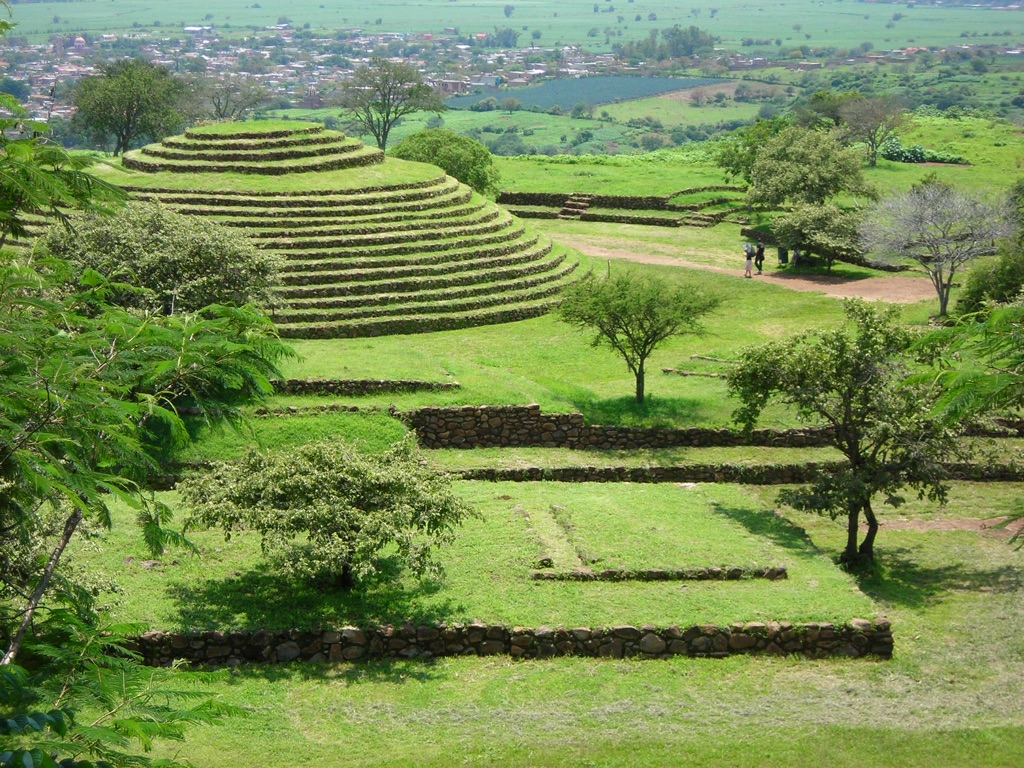Summary
The Mystique of Guachimontones
Guachimontones stands as a testament to the advanced pre-Columbian Teuchitlan tradition. Located in the heart of Jalisco, Mexico, this archaeological wonder captivates visitors with its unique circular stepped pyramids. Unlike any other Mesoamerican architecture, these structures showcase complex societal and religious beliefs. Experts believe they served as ceremonial centers. The site features several of these concentric circles, each with a distinct purpose. The central altars and surrounding platforms suggest a strong community focus on ritualistic activities. Guachimontones invites travelers and history enthusiasts alike to delve into its ancient past and explore the cultural significance of its unique design.
Get your dose of History via Email
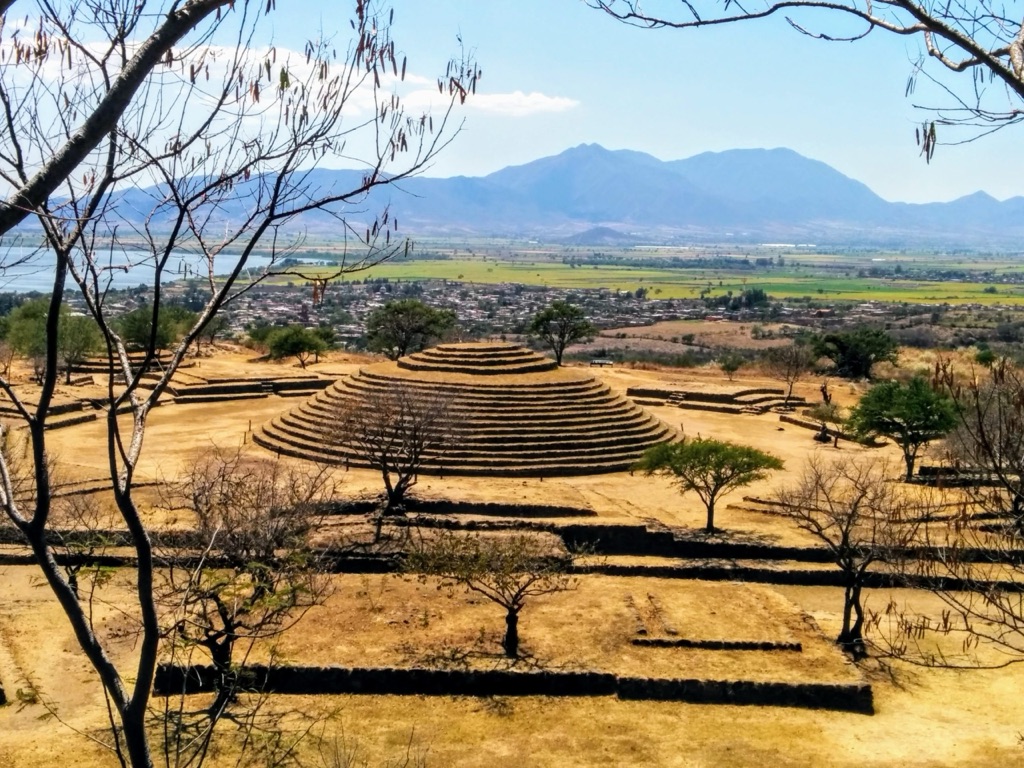
Exploring Guachimontones
Guachimontones is not just about the iconic circular pyramids. The site encompasses a broad area including ball courts, plazas, and residential complexes. Well-preserved due to its late discovery in the 1970s, the site offers a glimpse into the lives of its inhabitants. Detailed excavations have uncovered artifacts that speak volumes about the daily life and craftsmanship of the Teuchitlan people. With careful preservation, Guachimontones has emerged as a critical link to understanding West Mexico’s ancient societies. Visitors are encouraged to walk the grounds and experience the tranquil environment. Interpretive signs and guides enhance the visitor experience, providing insights into the history and significance of each structure and artifact.
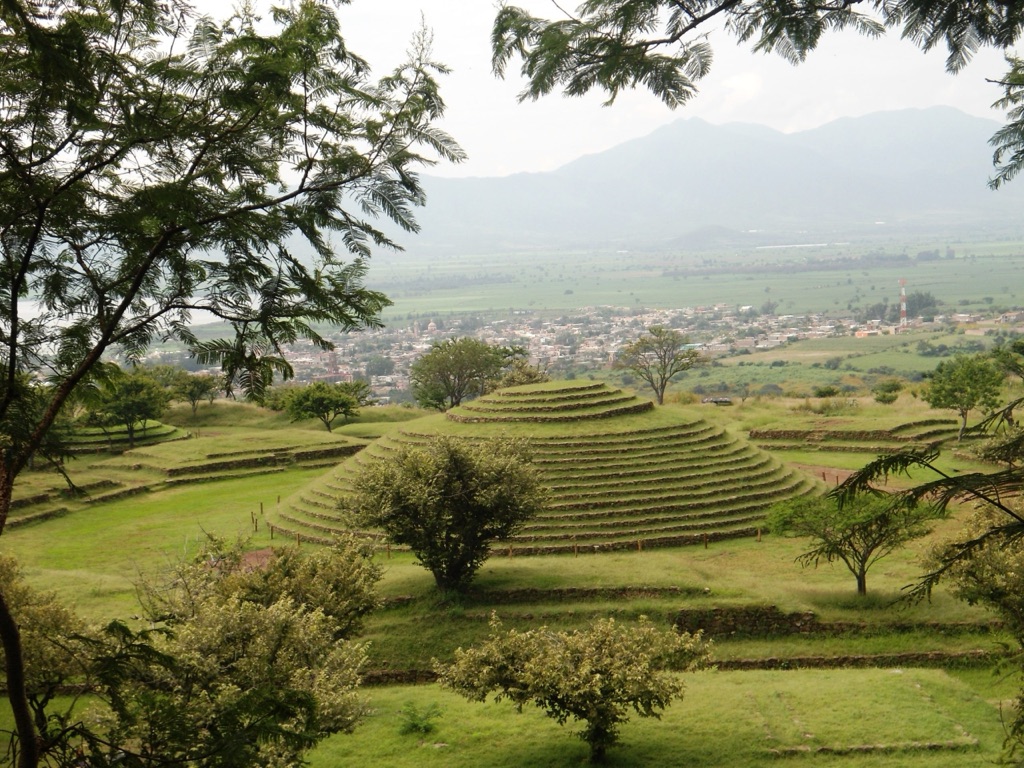
Guachimontones in Modern Context
Today, Guachimontones stands as a beacon of cultural heritage, reflecting the ingenuity of ancient West Mexican societies. It’s recognized by UNESCO for its cultural significance, drawing attention from archaeologists and preservationists globally. The site not only offers a journey back in time but also plays a vital role in the regional identity and tourism. As a pillar of pride for Jalisco and Mexico, Guachimontones enhances educational and cultural understanding of pre-Columbian history. By visiting, individuals contribute to the ongoing conservation efforts, ensuring that future generations can continue to learn from and appreciate this monumental historical treasure.
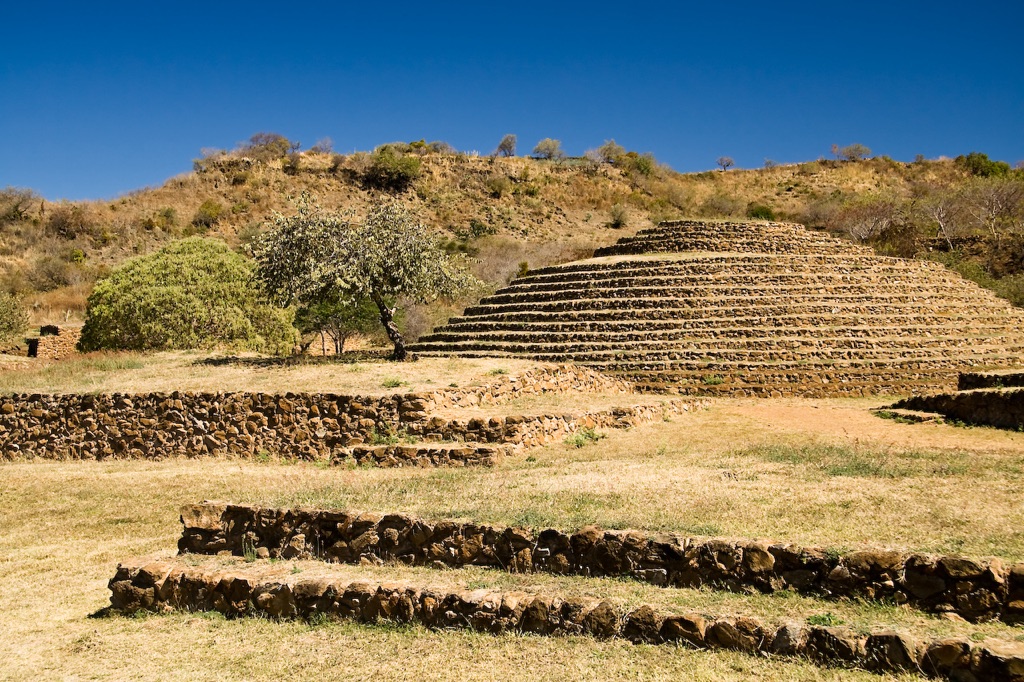
Historical Background of Guachimontones
The Rise of the Teuchitlan Tradition
Guachimontones, nestled in the Tequila Valley of Jalisco, Mexico, is a magnificent archaeological site. It dates back to the Teuchitlan tradition, which thrived from around 300 BCE to 900 CE. This culture was highly advanced for its time. It’s known for its distinctive societal structure and remarkable building techniques. The people developed an intricate system of mound-building, resulting in the site’s world-renowned circular step pyramids. These structures served multiple purposes, from social gatherings to religious ceremonies. They symbolize the Teuchitlan people’s deep spiritual connection with nature and the cosmos.
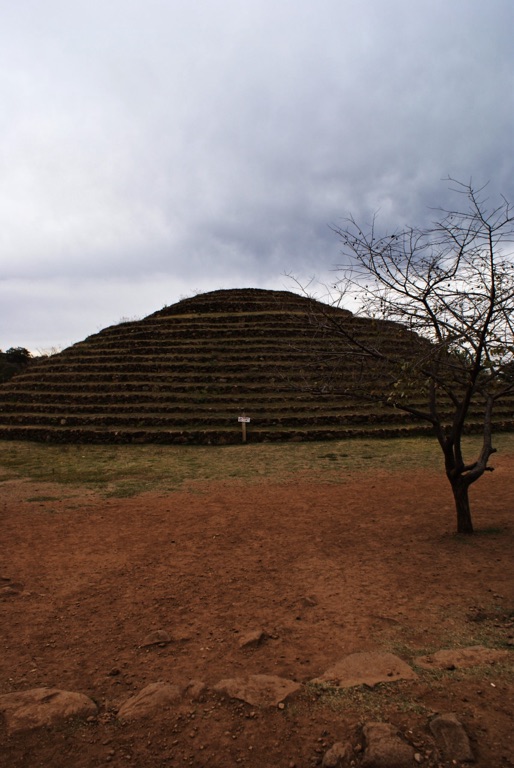
Architectural Marvels of the Ancients
The hallmark of Guachimontones is its central circular complexes, an architectural feat unseen elsewhere in Mesoamerica. These complexes consist of a central altar surrounded by a circular arrangement of terraced platforms. Their precise geometric design points to a keen understanding of spatial organization and aesthetic form. The largest pyramid, at approximately 60 feet in height, showcases the grandeur and ambition of its builders. Below these towering structures lay a series of smaller, intricate buildings, each adding to the complex narrative of its creators.
Guachimontones tells a story of a civilization deeply invested in its ceremonial life. The site includes several plazas, ball courts, and buildings that researchers believe held vast communal significance. The circular formations likely played a central role in rituals, possibly linked to solar and agricultural cycles. It’s this combination of spirituality and community focus that distinguishes the site from other ancient ruins.
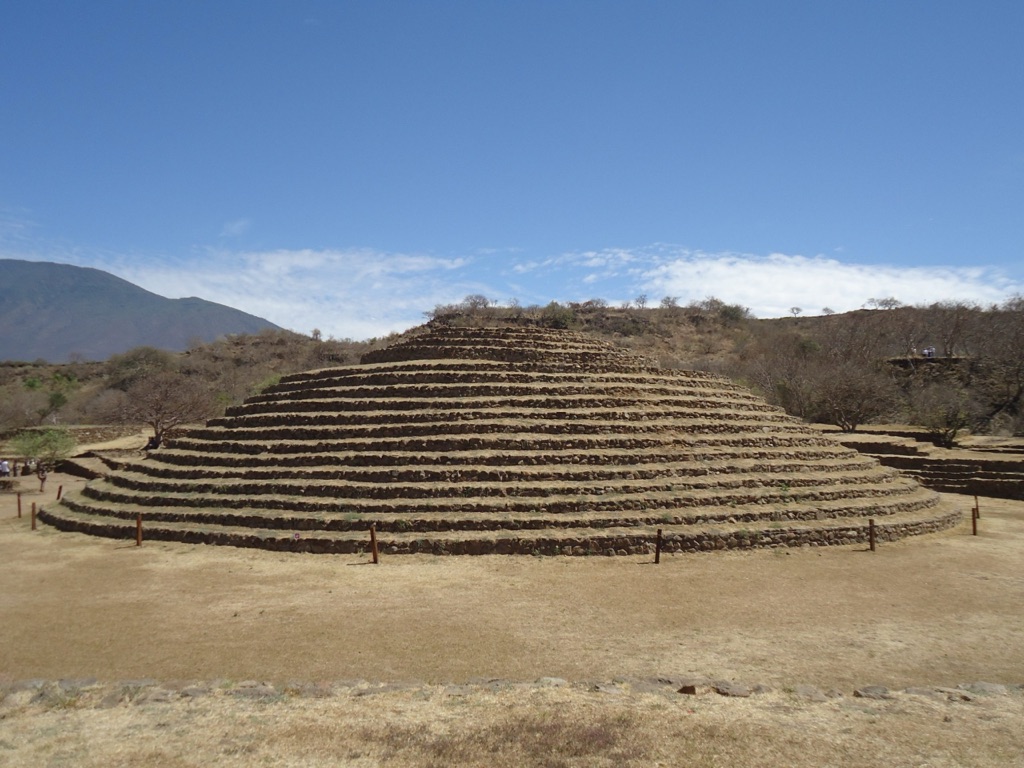
Rediscovery and Preservation
The modern history of Guachimontones begins with its rediscovery in the 1970s. Despite its significant cultural value, it remained relatively unknown until then. Excavation efforts since have brought to light the sophistication of the Teuchitlan culture. Ongoing archaeological work continues to unearth new discoveries, deepening our understanding of this ancient society. Additionally, an emphasis is now placed on preservation. This ensures the site remains a vibrant link to the past. The museum at the site’s entrance offers visitors profound insights into the ancient civilization. It emphasizes their contributions to history and culture.
In conclusion, Guachimontones is not just a testament to ancient ingenuity. It’s a cultural bridge connecting the past to the present. As a UNESCO World Heritage Site candidate, Guachimontones gains recognition for its historical significance. It continues to inspire awe and curiosity among historians, archaeologists, and visitors alike. The story of the Teuchitlan tradition, as told through the ruins of Guachimontones, is a narrative etched in stone, earth, and human endeavor. It is a story that transcends time, urging us to explore and appreciate the fleeting moments of human achievement.
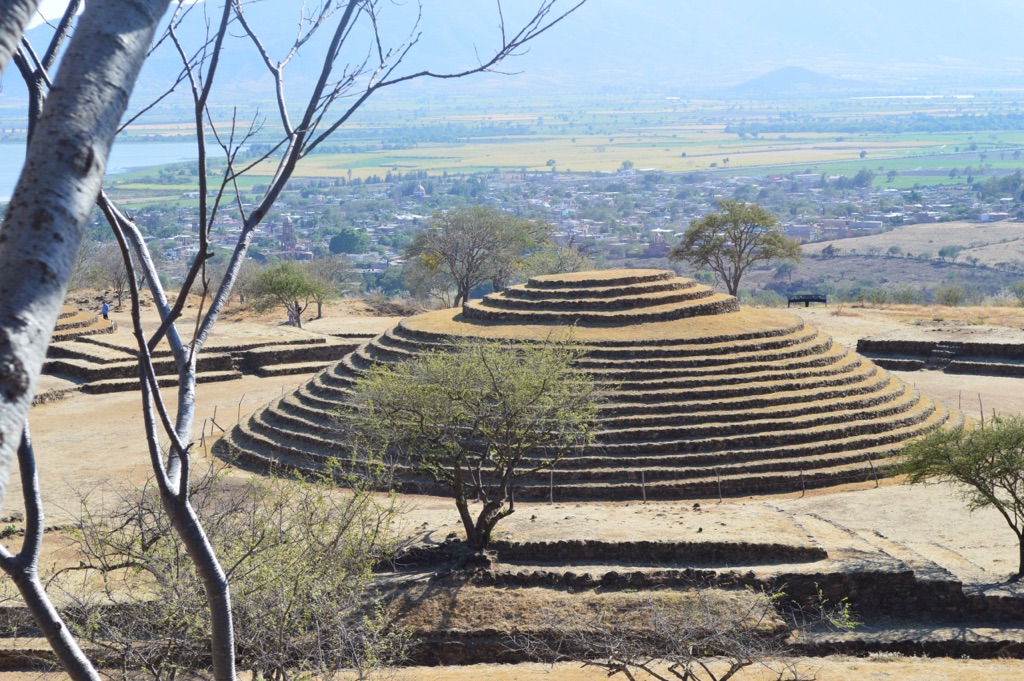
The Discovery of Guachimontones
A Remarkable Find by Phil Weigand
The Guachimontones site leapt from obscurity with the astute observations of American archaeologist Phil Weigand. In the 1970s, while working in the Tequila Valley, he noticed peculiar mounds. These mounds turned out to be ancient step pyramids hidden beneath Jalisco’s landscape. Weigand’s determination began the journey of uncovering one of the most significant archaeological finds of the region. His initial survey and subsequent excavations revealed monumental structures. Their circular, intricate designs captivated researchers and history buffs worldwide.
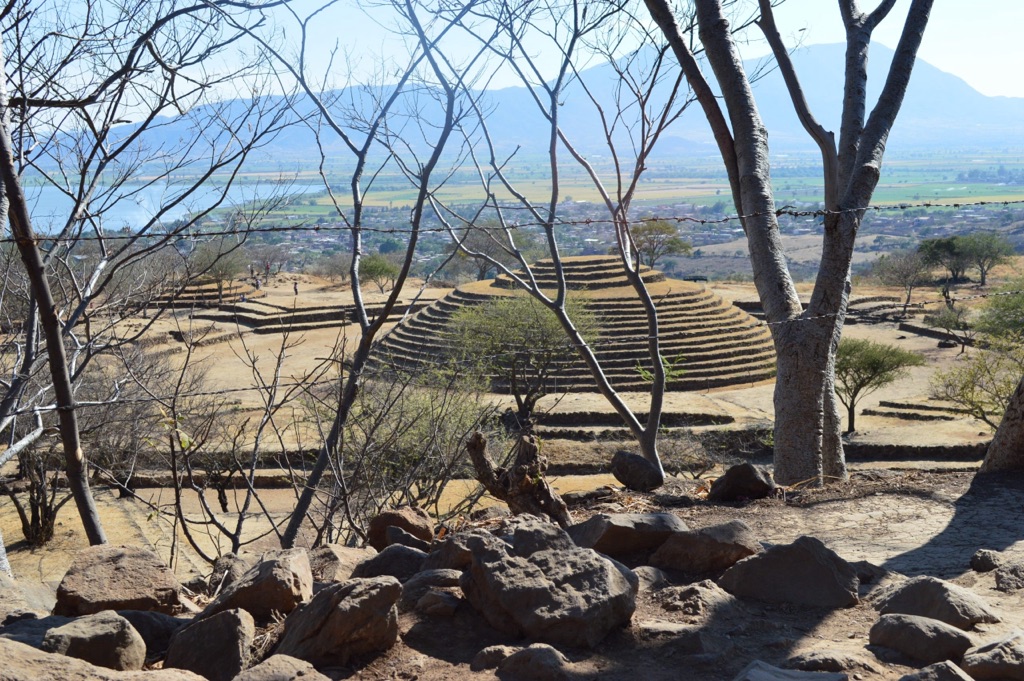
An Academic Partnership Expands Knowledge
Weigand, alongside his wife Acelia Garcia de Weigand, later joined forces with the University of Guadalajara. This pivotal moment expanded the reach and depth of the investigation. The collaboration propelled Guachimontones into the global spotlight. Together, they systematically unveiled the site’s many layers. They shared insights into the advanced urban planning of the Teuchitlan culture. This partnership also bolstered the importance of the site. It ensured methodical documentation and conservation efforts.
The uncovering of Guachimontones changed perceptions about ancient West Mexico’s cultural complexity. Among the revealed treasures were ceremonial centers, plazas, and residential compounds. These findings contest the previous belief that the region lacked such advanced settlements. Guachimontones thus solidified its place as a crucial hub of ancient Mesoamerican civilization.
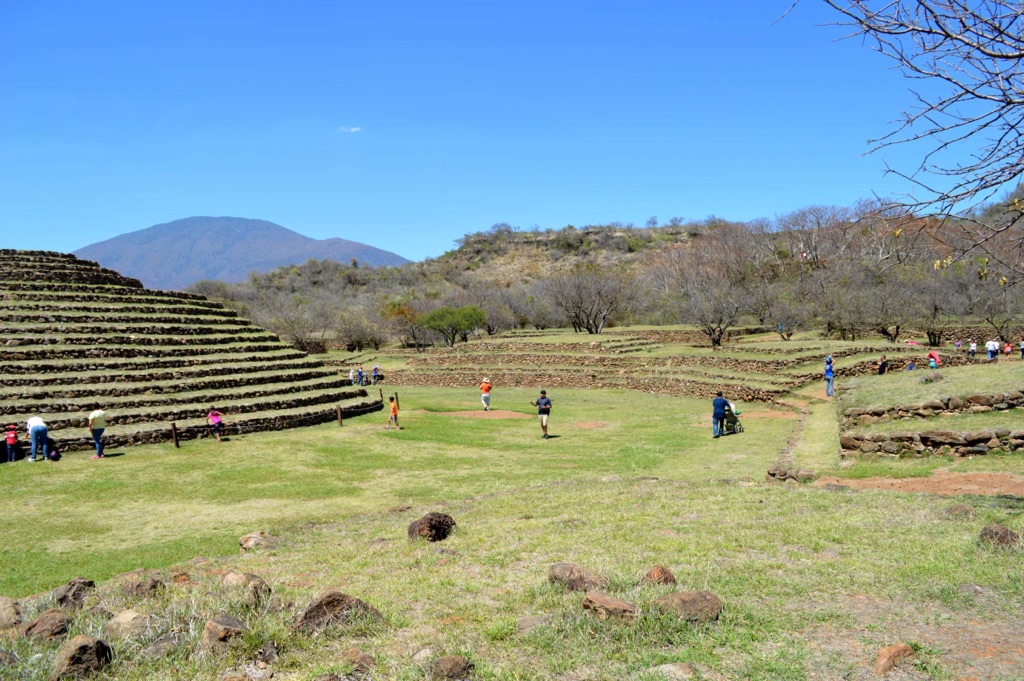
An Ongoing Legacy of Discovery
Even decades after its discovery, Guachimontones continues to be a source of new knowledge. Continuous exploration and excavation endeavors lead to the finding of artifacts, structures, and information. These enrich the narrative of the ancient peoples who once brought this site to life. Guachimontones offers a tangible link to the past for future generations. Its discovery informs our modern understanding of ancient civilizations.
In summary, the discovery of Guachimontones is a story of curiosity and scholarly pursuit. It pays homage to the Teuchitlan culture’s marvels. Phil Weigand’s initial recognition and the collaborative academic efforts brought this hidden gem into the limelight. Today, it continues to unravel mysteries, preserving a monumental piece of human history.
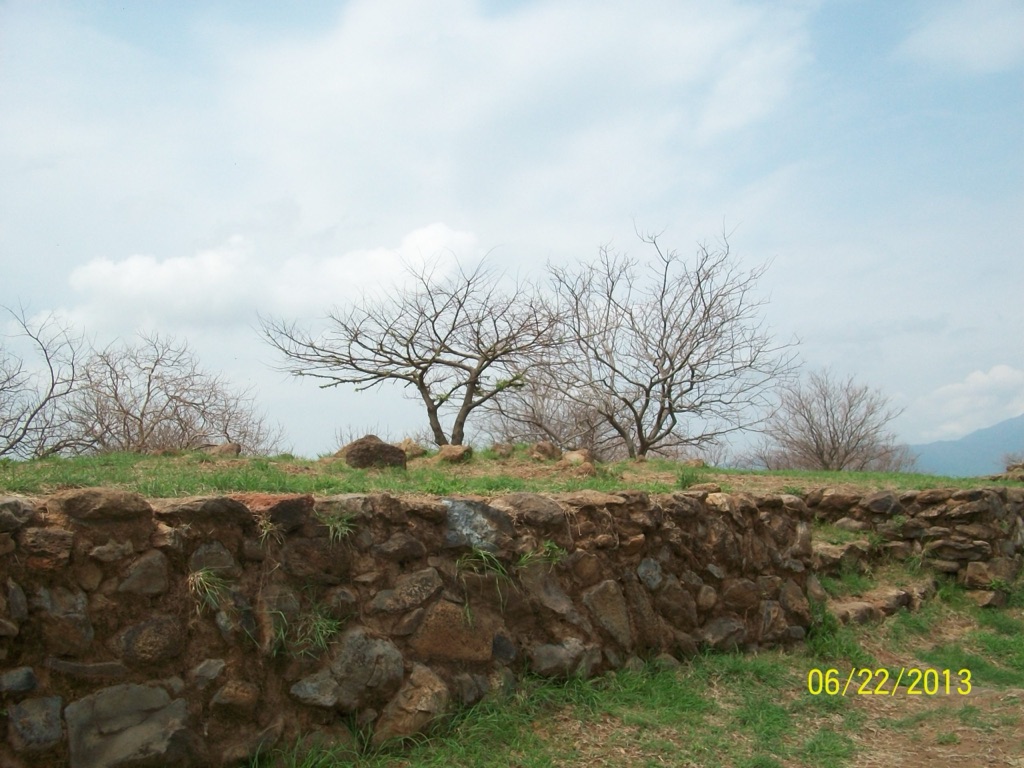
Cultural Significance, Dating methods, Theories and Interpretations
The Cultural Impact of Guachimontones
Guachimontones serves as a profound symbol of the Teuchitlan culture’s societal and spiritual ideologies. The site’s circular complexes have invited comparisons to other global cultural practices. They suggest a social organization centered around communal and ceremonial gatherings. The architectural design reflects a deep connection with cosmological cycles, such as the movements of the sun and moon. Through these structures, we glimpse the ideological framework and ritualistic aspects that were likely integral to the Teuchitlan way of life.
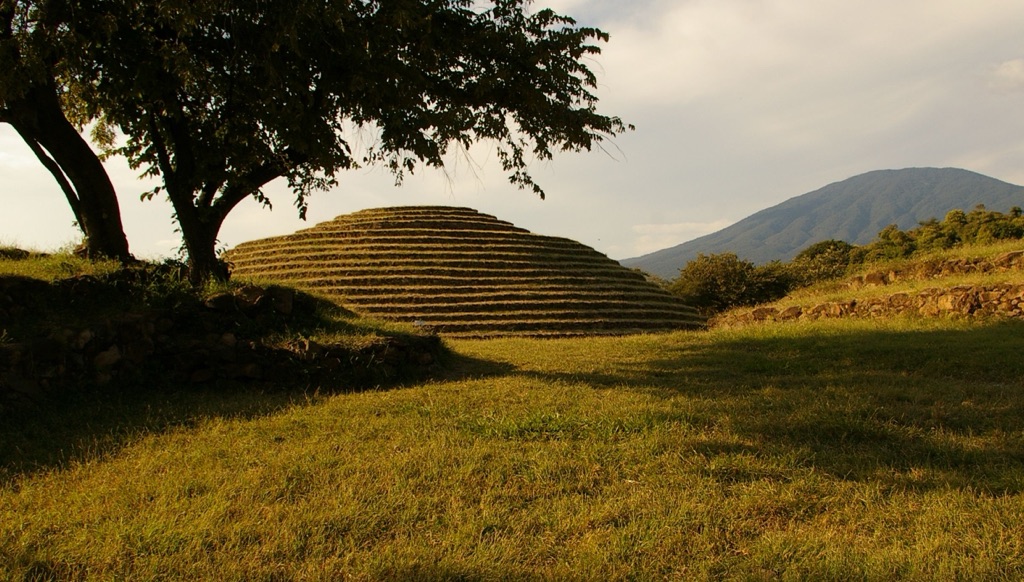
Unraveling the Age of Guachimontones
Dating Guachimontones has been pivotal in understanding the timeline of its inhabitants. Archaeologists have applied radiocarbon dating methods to organic materials found onsite. These include wood and charcoal from ancient fires. Such methods estimate the site’s construction and peak occupation periods. Through these findings, researchers have posited a timeline. It corresponds with the broader era of pre-Columbian civilization development in West Mexico.
Their theoretical frameworks help interpret the site’s functionality and the people’s lifestyle. One theory postulates that the circular complexes were tied to a societal rank system—political and religious leadership residing at the center, with the common populace occupying the outer terraces. This spatial arrangement hints at a sophisticated social hierarchy and governance structure, set amidst a backdrop of strong agricultural dependence and ritualistic practices.

Diverse Interpretations and Academic Debate
Academics and historians continue to debate the interpretations of Guachimontones. While some argue for its primarily ceremonial use, others suggest that it could have had defensive purposes or served as a social gathering place beyond religious contexts. Further studies into the distribution of artifacts and the layout of residential areas might offer more definitive insights. Guachimontones stands as a thought-provoking chapter in ancient history. It continues to inspire scholarly inquiry and diverse theories about the lives of its creators.
Ultimately, Guachimontones is not just an archaeological relic; it’s a vibrant piece of the cultural tapestry that shaped today’s Mexican heritage. It is a crucial narrative that significantly contributes to the historical wealth and identity of the Jalisco region. Guachimontones is a focal point for ongoing research and interpretation, offering a wealth of knowledge still being discovered and understood.
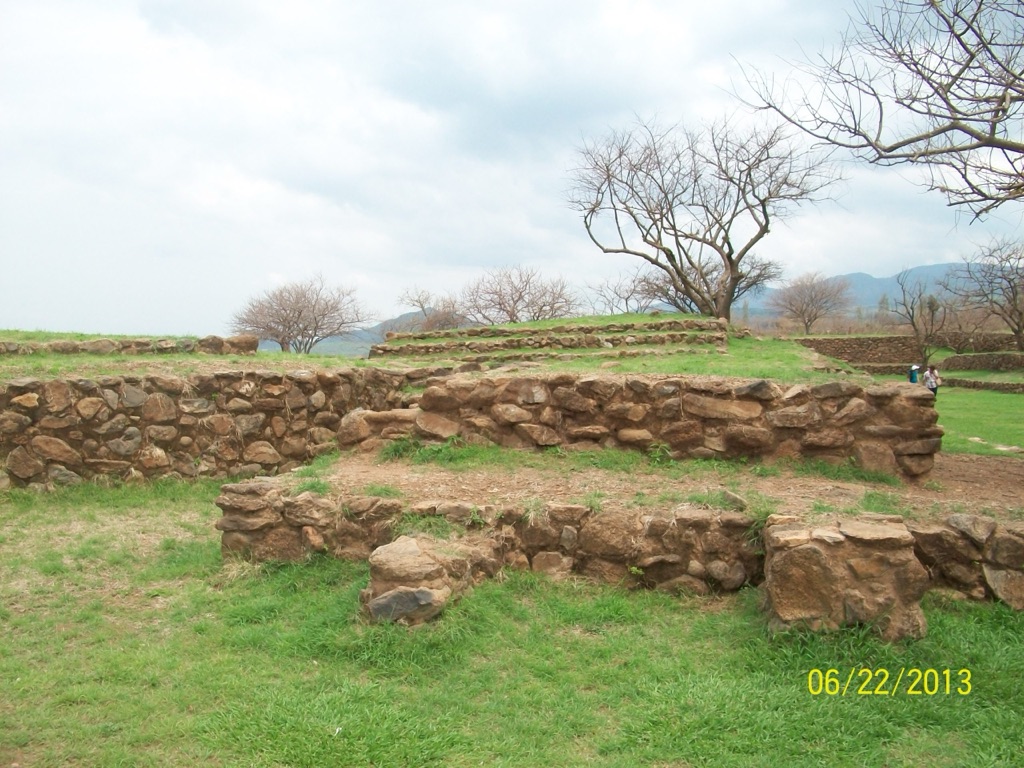
Conclusion and Sources
The exploration of Guachimontones has unveiled a civilization that flourished through complex social structures, innovative architecture, and a deep spiritual connection to their environment. It provides a fascinating look at a culture that, while distinct from other Mesoamerican civilizations, contributed richly to the tapestry of human history. As studies and excavations continue, Guachimontones promises to further our understanding of the Teuchitlan tradition and the ancient world of West Mexico.

For further reading and to validate the information presented in this article, the following sources are recommended:
Or you can check any of these reputable archaeological and historical texts:
Beekman, C. S. (2008). Recent Research in Western Mexican Archaeology. Journal of Archaeological Research, 16(1), 41-109.
Weigand, P. C., & Beekman, C. S. (1999). The Architecture of the Guachimontones Site: A Preliminary Report. In Ancient West Mexico: Art and Archaeology of the Unknown Past, 113-133, The Art Institute of Chicago.
Foster, M. S., & Weigand, P. C. (Eds.). (2007). The Archaeology of Ancient Mexico and Central America: An Encyclopedia. Garland Publishing, Inc.
Mountjoy, J. B. (2006). Guachimontones: An Ancient Ceremonial Center in the Highlands of Western Mexico. Antiquity, 80(307), 161-174.
Garcia-Des Lauriers, C. (2011). The Ceramics of Guachimontones, Jalisco, Mexico. Latin American Antiquity, 22(3), 305-332.

